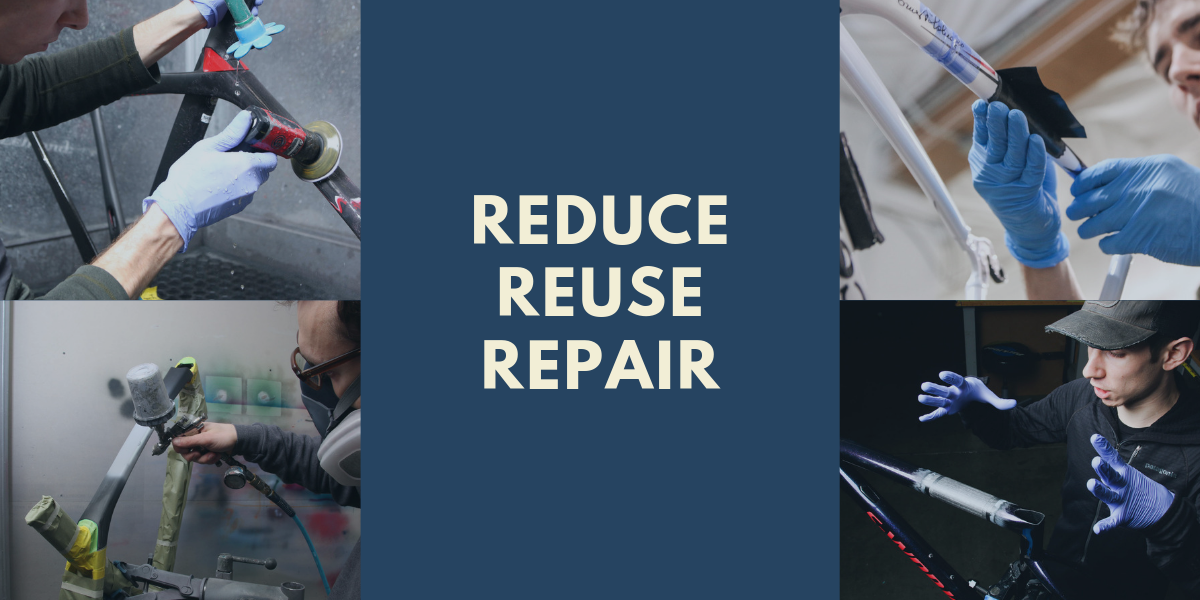
Words by our friend Dan Powell.
For the last 50 years, people all around the world have slowed their lives down for a day in April to think about their place on this spinning blue ball of rock, water and gas that is our home. Founded in 1970, Earth Day is one day set aside to raise awareness of the fragility of our natural resources, and a moment to show the planet some love and respect. All of that said, Earth Day doesn’t have to just be about planting a tree.
There was a time where a person who worked the earth for a living could repair their tiller, hang a new handle on an axe or simply mend their pants. Those skills slowly began to recede round about the time folks started moving to the cities to work in factories. My point is that along the way we’ve lost much of our ability, and desire, for repairing the things we value.
.png)
Repair, as is said now is some circles, is a Radical Act. Sure, it can sometimes take a little more effort to either find someone to repair something for you or to learn to do it yourself. But there is a certain satisfaction you can only gain by rolling up your proverbial sleeves and getting after the repair of something that has broken or worn out. Repairing something, or deciding to get something repaired, is agreeing to further your relationship with said something. We live in a world of “fast fashion” and “single-use plastic straws” but we don’t have to be satisfied with it, nor do we have to subscribe to that lifestyle.
The same can be said of the bicycle industry. We’re often convinced we need the newest model of whatever it is. And yes, I’ll agree that from time to time you will wear out brake pads, drive trains, tires and helmets. But it has been my experience that often, a little repair can go a long way to getting more life out of something you already have.
Whether it is to satisfy curiosity, gain greater understanding of how things function, to make them function even better/stronger/faster or even to foster a greater sense of self-reliance, learning to fix things can change the way you interact with your world. Repair is empowerment.
All of this said we live in a modern world where our tools and toys are increasingly technologically complicated. It is one thing to pound a couple of steel wedges into the top of an axe handle and to go out and chop down a tree. It is quite another thing to crack open your laptop, or your brand new farm tractor or saw into your expensive bike to try to “fix” whatever is ailing it.
.jpg)
But let’s bring this post back to Earth Day. Even though we live in a culture where replacement, not repair, is king, it should go without saying that often far fewer resources go into repairs than go into the production of an entirely new product. Take a carbon fiber bicycle frame for example. Years ago, the strength and repair-ability of carbon were often touted by manufacturers. Today many manufacturers expressly forbid their customers from having their frames repaired. Now sure, some crashes inflict so much damage that a frame should be replaced. Often though, they do not.
There is any number of ways you can crack or break a frame. Sometimes this damage is the result of user error, a high-speed crash or even a design flaw. In the hands of someone who is qualified, a carbon fiber frame can be repaired in a way that it is perhaps even stronger than it was, to begin with. Moreover, it’ll keep that frame out of the landfill. And just as importantly, it gives you a choice in what you want to do.

So, as you celebrate Earth Day this coming week, go ahead and plant that tree, but also consider what other ways you can make an impact on our natural resources. What item can you repair and put back into your rotation without casting it to the scrap heap? What new item can you live without?